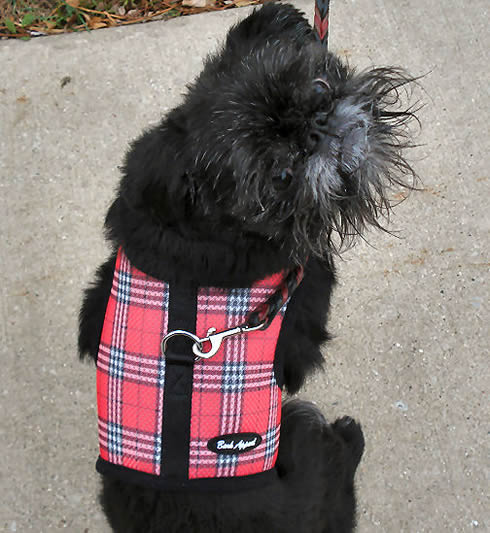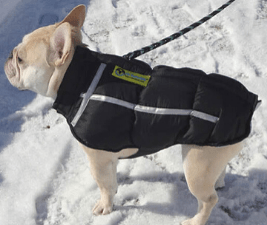Small dogs, especially ones with short fur, need protection from severe weather and, whether we like it, love it, or hate it, winter’s coming up. If your dog hates clothes, there’s time before the weather hits to change their mind. You can get your dog to like wearing stuff.
First step
The biggest mistake most people make is assuming, since it’s no big deal to you, it’s not a big deal to your dog. Generally speaking, most dogs don’t like surprises. They like knowing what’s happening, when it’s happening, and that the world is a familiar place.
And that’s the key to getting your dog to like that new harness, coat, sweater, even boots or a post-surgery cone. Make them familiar objects – and welcome ones. It can be as simple as holding the item, letting your dog sniff it and check it out, and giving them praise and treats. Just hold the harness in one hand, and give treats with the other. Just a few, maybe five tiny treats, and that’s it.
The best way to get your dog to absolutely hate something is to grab them, and force it on. Sometimes there isn’t time to let them accept the new thing – especially if there’s an emergency and the “cone of shame” is required. But short of that, a little advance dog training can make everyone’s life easier.
A day at a time
If your dog gets treats and praise every time they see that new harness, they’re going to love it. Dogs are great at transferring the value of the treat to the object or behavior you pair it with. That’s why clicker training works. When introducing the clicker, all you do is click then treat, many times in a row. Dogs quickly learn that every single “click!” means they get a cookie. You can bet they’re trying their best to get you to click!
After a few sessions, just a couple minutes at a time, of introducing your dog to the new harness, it’s time to ask for more. Rather than the object just being there, you’ll wait for your dog to interact with it in some way – sniff it, paw it, move it. Anything they do is okay and should be praised and rewarded. That’s all for that session.
What’s next
After a few sessions where the dog is choosing to interact with the harness (coat/sweater/boot), it’s time to start trying it on. This gets much more specific to the actual garment you’re working with. If it’s a harness that goes over the dog’s head, hold it open even with the dog’s face and hold a treat on the other side. If the dog touches the harness with their face, praise and reward. This is the time when all your patience comes into play. Your dog wants the treat, but it hesitant about putting his/her face into the neck hole, just wait. If the dog is still reluctant after 20-30 seconds, reach through the neck hole and give your dog the treat. Try again another time. You want your dog to associate good things going through the harness, so be patient.
If it’s boots you want your dog to wear, don’t try for all four at once. And start with one back boot. When your dog is accustomed to the look, and smell of the boot, try just touching a back foot with it. Bit by bit, you’ll get there.
No surprises
As we said, dogs really don’t like surprises. They will accept things they’re not crazy about as long as they know what’s going on. Your dog may never love wearing boots, but he or she will adjust to them given time and patience.
Dogs truly are adaptable beings as long as we take it at their speed and level of comfort. Be patient. It looks like it’s going to be a long winter.
Enjoyed this post? Click here to sign up for the weekly newsletter and never miss another!










